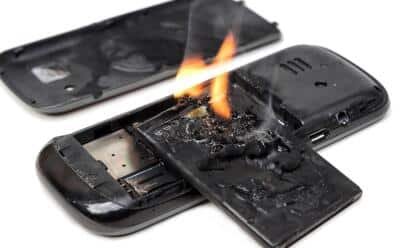Nickel Cadmium vs Lithium Ion Battery
As technology continues to advance, the demand for high-performance and long-lasting batteries has become increasingly important. With the rise of portable electronics and electric vehicles, the battle between Nickel Cadmium (Ni-Cd) and Lithium-ion (Li-ion) batteries has become a hot topic. Both batteries have their advantages and disadvantages, and the choice between the two can depend on various factors. In this article, we will explore the differences between Ni-Cd and Li-ion batteries and their respective pros and cons.
What is Nickel Cadmium Battery?
A Nickel Cadmium (Ni-Cd) battery is a type of rechargeable battery that uses nickel oxide hydroxide and metallic cadmium as electrodes. It has a high energy density and is capable of delivering high discharge currents. Ni-Cd batteries are commonly used in portable electronic devices, emergency lighting, and power tools.
The construction of a Ni-Cd battery consists of a positive electrode made of nickel oxide hydroxide, a negative electrode made of cadmium, and an electrolyte made of potassium hydroxide. The electrodes are separated by a porous separator that allows the flow of ions between the electrodes while preventing electrical contact.
During charging, cadmium ions are oxidized at the negative electrode, releasing electrons that flow through the external circuit to the positive electrode. At the positive electrode, nickel oxide hydroxide is reduced and absorbs electrons while releasing oxygen. The process is reversed during discharge, with the cadmium electrode being reduced and the nickel oxide hydroxide electrode being oxidized.
One of the advantages of Ni-Cd batteries is their ability to handle high discharge rates without significant voltage drop. They are also able to operate over a wide range of temperatures and have a long cycle life. However, they are prone to a memory effect, where the battery’s capacity is reduced if it is repeatedly discharged to the same level.
Ni-Cd batteries have largely been replaced by newer battery technologies such as Nickel Metal Hydride (NiMH) and Lithium-ion (Li-ion) batteries due to their lower energy density and environmental concerns related to cadmium.
Features of Nickel Cadmium Battery:
The capacity of a standard Nickel Cadmium battery is typically in the range of 500-1500 mAh, with a nominal voltage of 1.2 volts. The internal resistance of a NiCad battery is typically in the range of 0.05-0.3 ohms. The self-discharge rate of a NiCad battery is typically less than 20% per month, and the cycle life is typically in the range of 500-1000 cycles. The energy density of a NiCad battery is typically in the range of 50-80 Wh/kg.
- ENERGY DENSITY – Nickel Cadmium batteries have a high energy density, which means they can store a large amount of energy in a small space. The energy density of a NiCad battery is typically in the range of 50-80 Wh/kg.
- CYCLE LIFE- Nickel Cadmium batteries have a long cycle life, which means they can be charged and discharged many times without significant loss of capacity. The cycle life of a NiCad battery is typically in the range of 500-1000 cycles.
- TEMPERATURE RANGE- Nickel Cadmium batteries can operate over a wide temperature range, from -20°C to 60°C. This makes them suitable for use in a variety of environments.
- DISCHARGE RATE- Nickel Cadmium batteries have a high discharge rate, which means they can deliver a large amount of power quickly. The discharge rate of a NiCad battery is typically in the range of 1-2C.
- SELF-DISCHARGE RATE- Nickel Cadmium batteries have a low self-discharge rate, which means they can retain their charge for a long time when not in use. The self-discharge rate of a NiCad battery is typically less than 20% per month.
- ROBUST AND DURABLE- Nickel Cadmium batteries are robust and durable, and can withstand rough handling and extreme conditions. They are also resistant to shock and vibration.
Shortcomings of Nickel Cadmium
- Toxicity: Nickel Cadmium batteries contain toxic chemicals such as cadmium and nickel, which can cause harm to the environment and human health.
- Memory Effect: Nickel Cadmium batteries suffer from memory effect, which means that they tend to remember the last charge and discharge cycle, leading to reduced capacity over time.
- Self-Discharge: Nickel Cadmium batteries have a high rate of self-discharge, which means that they lose their charge even when not in use, making them unsuitable for long-term storage.
- Low Energy Density: Nickel Cadmium batteries have a lower energy density compared to other types of batteries, which means that they need to be recharged more frequently.
- Short Lifespan: Nickel Cadmium batteries have a shorter lifespan compared to other types of batteries, typically lasting between 2-3 years.
- High Cost: Nickel Cadmium batteries are relatively expensive compared to other types of batteries, making them less attractive for use in consumer electronics.
- Limited Temperature Range: Nickel Cadmium batteries have a limited temperature range, which means that they may not work well in extreme temperatures.
What is Lithium ion Battery
A lithium-ion battery is a type of rechargeable battery that uses lithium ions as the primary material for its electrolyte. It is a popular choice for portable electronic devices, electric vehicles, and renewable energy storage systems.
The basic structure of a lithium-ion battery consists of two electrodes – a positive cathode and a negative anode – separated by an electrolyte. The cathode is typically made of a lithium metal oxide, while the anode is made of graphite or other carbon-based materials. The electrolyte is a solution of lithium salts in an organic solvent.
When the battery is charged, lithium ions move from the cathode through the electrolyte to the anode, where they are stored as lithium atoms. When the battery is discharged, the process is reversed, and the lithium ions move from the anode to the cathode, generating an electric current.
Lithium-ion batteries have several advantages over other types of batteries, including their high energy density, long cycle life, and low self-discharge rate. They are also lightweight and have a relatively low environmental impact compared to other battery chemistries.
However, lithium-ion batteries also have some drawbacks, including their high cost, potential for thermal runaway and overheating, and the need for careful handling and disposal to prevent environmental damage.
Features of Lithium ion Battery
- High Energy Density: Lithium-ion batteries have a high energy density, which means they can store a lot of energy in a small package. This makes them ideal for use in portable electronics like smartphones and laptops.
- Low Self-Discharge: Lithium-ion batteries have a low self-discharge rate, meaning they can hold their charge for a long time when not in use. This makes them ideal for backup power applications.
- High Charge/Discharge Efficiency: Lithium-ion batteries have a high charge/discharge efficiency, meaning they can convert more of their stored energy into usable power. This makes them more efficient than other types of batteries.
- Fast Charging: Lithium-ion batteries can be charged quickly, allowing them to be used in fast-charging applications like electric vehicles.
- Low Maintenance: Lithium-ion batteries require very little maintenance, making them easy to use and maintain.
- Long Lifespan: Lithium-ion batteries have a long lifespan, making them a cost-effective option over time.
- Lightweight: Lithium-ion batteries are lightweight, making them ideal for portable applications where weight is a concern.
- Safe: Lithium-ion batteries are generally safe to use, with built-in safety features that prevent overcharging, overheating, and other potential hazards.
Comparision
Lithium-ion batteries and Nickel Cadmium batteries are two different types of rechargeable batteries. Here are the differences between the two:b
| Parameter | Lithium Ion Battery | Nickel Cadmium Battery |
|---|---|---|
| Energy Density | High | Moderate |
| Self-Discharge Rate | Low | High |
| Memory Effect | None | Significant |
| Environmental Impact | Low | High |
| Cost | Expensive | Affordable |
| Cycle Life | High | Moderate |
| Charging Time | Fast | Slow |
| Operating Temperature | Wide range | Limited |
| Safety | Safe with proper handling | Risk of overheating and explosion |
| Applications | Consumer electronics, electric vehicles, renewable energy storage | Emergency backup power, power tools, medical equipment |
- Energy Density: Lithium-ion batteries have a higher energy density than Nickel Cadmium batteries. This means that they can store more energy in the same amount of space. As a result, lithium-ion batteries are smaller and lighter than Nickel Cadmium batteries.
- Memory Effect: Nickel Cadmium batteries are prone to memory effect, which means that they can lose their maximum capacity if they are not fully discharged before recharging. Lithium-ion batteries do not have this problem and can be recharged at any time without affecting their performance.
- Self-Discharge: Nickel Cadmium batteries have a higher self-discharge rate than lithium-ion batteries. This means that they lose their charge over time even when not in use. Lithium-ion batteries have a lower self-discharge rate and can hold their charge for longer periods.
- Charging Time: Lithium-ion batteries can be charged faster than Nickel Cadmium batteries. They can also be charged more times than Nickel Cadmium batteries.
- Environmental Impact: Nickel Cadmium batteries contain toxic chemicals such as cadmium, which can be harmful to the environment. Lithium-ion batteries are considered to be more environmentally friendly.
In conclusion, the debate between Nickel Cadmium Battery and Lithium ion Battery has been ongoing for years. While both types of batteries have their benefits and drawbacks, it’s clear that Lithium ion batteries are the superior choice in today’s world. They are lighter, more energy-dense, and have a longer lifespan than Nickel Cadmium batteries. Additionally, Lithium ion batteries are more environmentally friendly and don’t contain toxic elements like Cadmium. As technology continues to advance, it’s likely that Lithium ion batteries will become even more efficient and affordable, making them the go-to choice for powering our devices.



Leave A Comment